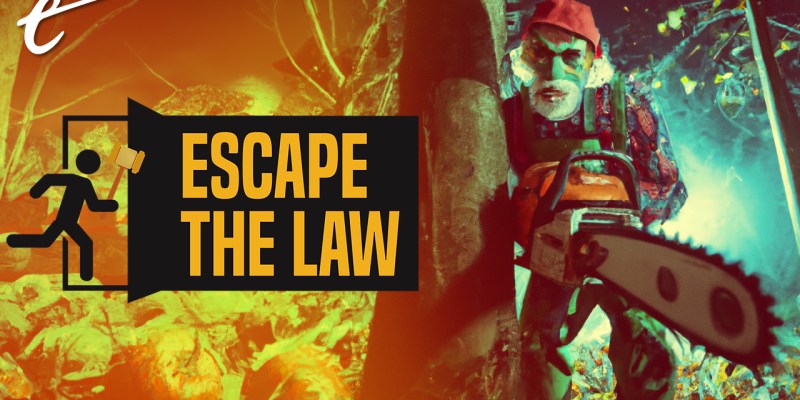Four years ago, in this very column, I recounted three of the scariest, bone-chilling, terrifying Halloween stories — stories about copyrights that refused to die, about Michael Jackson’s ghost enforcer, and about a pink Copyright Scorpion who hunts down and murders infringers. Four years later, and I’ve got a new batch of stories even scarier than the last. You can cancel the haunted house this year — the specter of copyright liability is bound to be scarier than anything crawling around in the dark. This time, we’re talking about the copyright law surrounding AI art, deepfake human faces, and more!
The Night of the Living Robot: When the AI Student Becomes the (Art) Master
We like to think that humans are at the top of the food chain — that nothing on Earth can match our wit, talent, and strength. But human dominance may be a thing of the past. Just a few weeks ago, an AI-generated work of art took first place at the Colorado State Fair art competition, beating out 20 puny humans in the process. The AI win is remarkable, since there wasn’t even a single pixel that was made by a human.
Artificially generated art has been around for years, mostly without recognition. In the last few months, however, it seems that AI programs have obtained newfound respect, both legally and artistically. For example, in 2018, Stephen Thaler (whom you may remember as the man who created the patent-seeking robot) sought a copyright registration for an AI-generated work of art, titled A Recent Entrance to Paradise. The work was generated by an AI that sought to generate “views of a simulated near-death experience.” The copyright registration was denied, on the grounds that only works of human authorship are eligible for copyrights.
This year, however, the Copyright Office granted a registration for a graphic novel whose images were made entirely of AI-generated art. The key difference between the two scenarios was that in Thaler’s case, the application listed the AI system as the author of the work, whereas the graphic novel was authored by a human, with AI assistance. In practice, however, that distinction isn’t all that significant. Under copyright law, it doesn’t take much for a work to be copyright-eligible. As one court explained, all that is required is a “scintilla of creativity.”
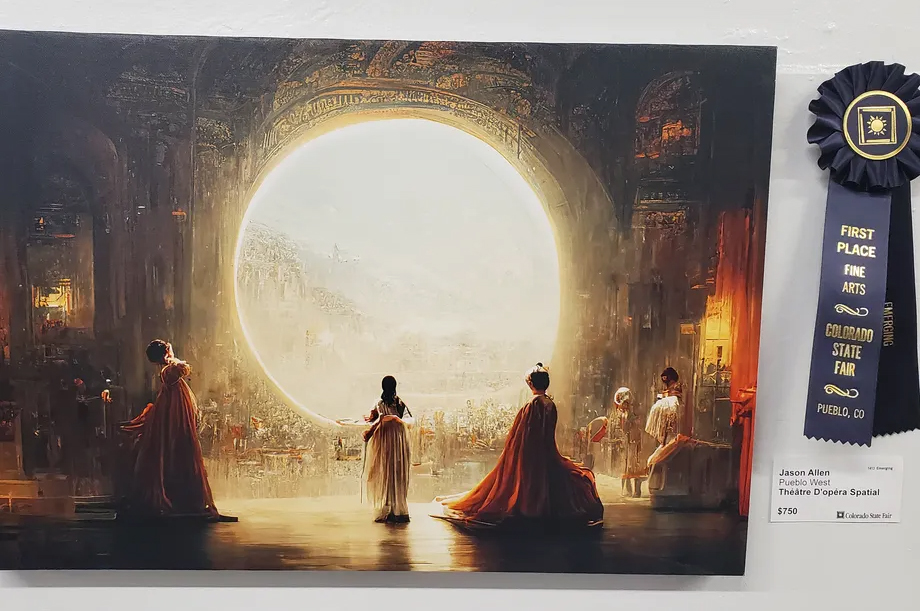
Théâtre D’opéra Spatial, Jason Allen
This means that a person can obtain copyright registrations for works where a robot is responsible for 99% of the creation, so long as the remaining 1% (for example, color touch-up, or the addition of a small bird) contains the required “scintilla.” And in the eyes of the law — at least for now — AI systems have been deemed incapable of making creative contributions. This means that, if a human’s contributions compose just 1% of a registered work, the remaining 99% would be free to use.
Having said that, proponents of AI art don’t have to look very hard to find the required creative contribution. The most prominent AI works are generated through trial and error using specially crafted word prompts. For example, Jason Allen, the winner of the Colorado State Fair, spent 80 hours crafting the prompts he used to generate the art and tested over 900 different prompts before settling on the winner. Given the sensitivity of AI art generators, one could argue that the selection and refinement of prompts (at least as they are used today) involves significant creative work, analogous to placing a camera or framing a shot. And because a human’s prompt selection informs the creation of the entire work, there would not be any obvious way to disentangle the creative and non-creative elements of the work.
The existence of AI-powered image generation raises another question: What happens if someone uses AI to copy an artist’s style? For example, what if an AI could draw a portrait in the style of Picasso or a landscape in the style of Van Gogh? Would those style-knockoffs infringe any copyrights? As it turns out, they wouldn’t — the AI (or the human who directed the AI) would get away scot-free. That’s because copyright only protects individual works, rather than the underlying styles or methods used to create that work.
This is why Weird Al can’t prevent others from making polka music and why the Backstreet Boys can’t prevent One Direction from making pop songs. Having said that, if a work’s style is so distinctive that it becomes associated with a particular work, then the copyright owner could claim that works embodying that style are illegal copies. Whether that claim would succeed would require a specific comparison of the original work and the claimed copy. If the works are “substantially similar,” then the AI-copier could find itself in hot water — that is doubly true if the AI was instructed to mimic or copy aspects of the underlying work.
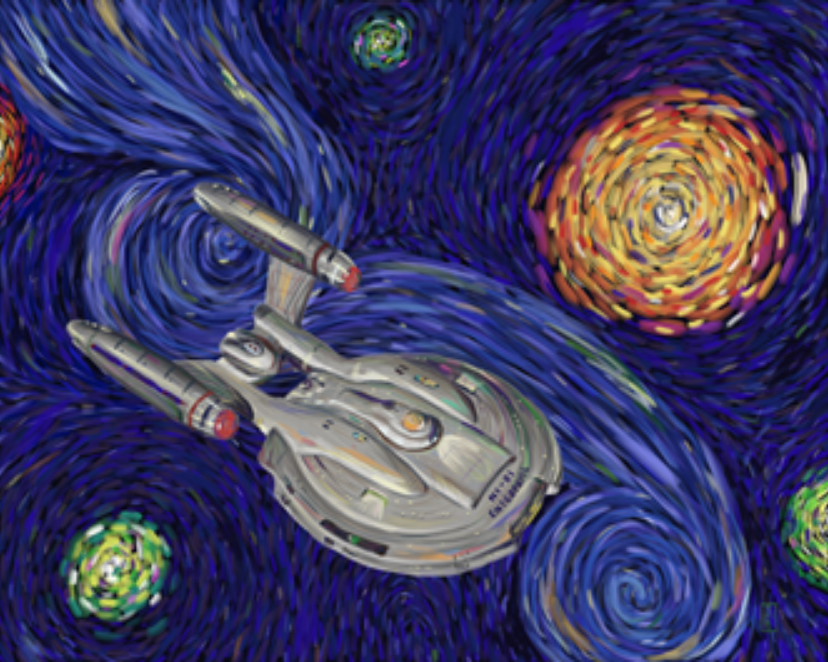
This image copies Van Gogh’s style but does not appear to copy any particular elements of Van Gogh’s work, so it is probably okay.
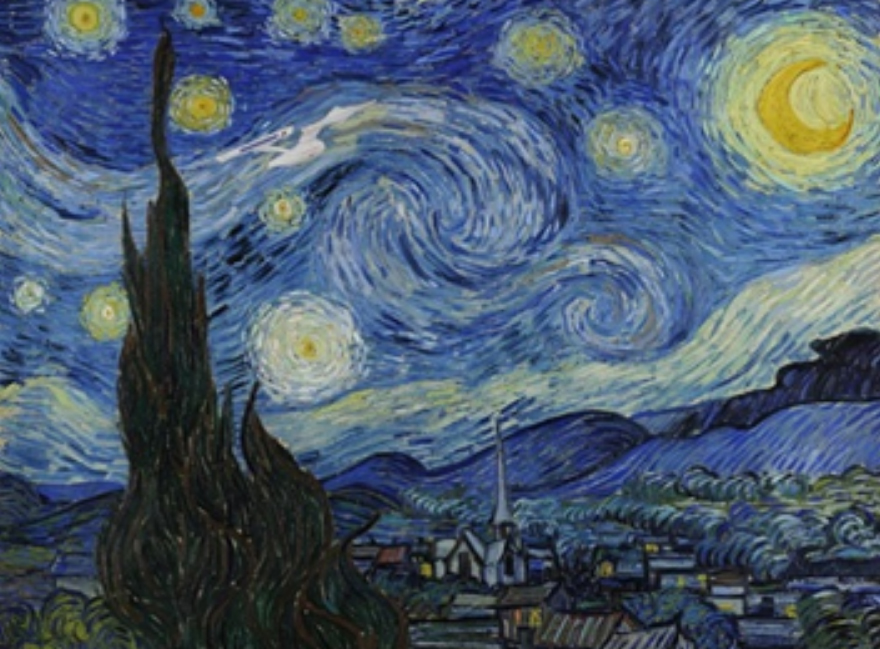
This image is just a copy of Starry Night that adds the Enterprise on top. This image would infringe (if Starry Night were not in the public domain).
The results are clear: While robots may be stronger, faster, smarter, and more artistic than us humans, we remain the undisputed masters of copyright law. Whether fair or not, AI will not find success at the copyright office anytime soon. If nothing else, at least we’ll have our copyright registrations to cling to when the Revolution begins.
The Unrelenting, Unstoppable, INSATIABLE Copyright Assignment
We all live in fear of the monster that cannot be killed — the horror that can never be held at bay. Intellectual property lawyers know this monster well — we call it the Copyright Act. Every 35 years, like clockwork, copyrights that were cast out by their owners return home to cause a new round of trouble. This is because copyright holders are not allowed to sell their copyright interest forever. By statute, any copyrights that are assigned or transferred to another person revert back to the owner 35 years later.
The most recent victim of this copyright horror was Top Gun: Maverick. Paramount secured the rights to Top Gun in 1986. Thirty-five years later, those rights reverted back to the original owner. Despite not having the rights, Paramount developed and released Maverick and has since been sued for copyright infringement. Similar problems arose with respect to horror film Friday the 13th.
What can be done to prevent these reversions? The answer is as straightforward as it is terrifying: nothing. There is no stopping The Return of the Copyright. All that can be done is to hunker down, hold your children, and brace yourself for the heavy soul-crushing royalties that must be paid to stave off the copyright for another 35 years.
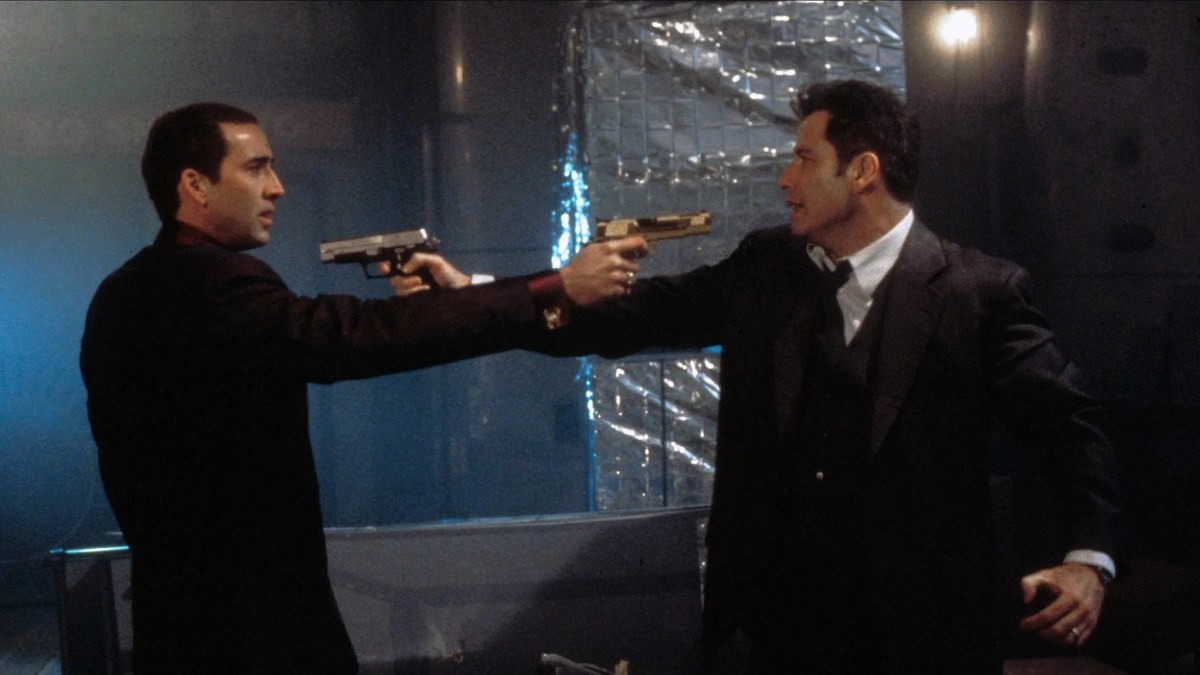
Invasion of the Face-Snatchers
One of the scariest film concepts of all time is Face/Off, a movie in which the two main characters undergo surgery to swap faces. Face/Off was released in 1997 as a high-concept science fiction action movie. Today, however, the possibility of a face-swap has become a reality. What’s more, face-swaps can now take place instantly — and without the subject’s knowledge or permission. Don’t believe me? Just ask Bruce Willis. Last month, a website called “Deepcake” advertised that it had partnered with Bruce Willis to create a fully programmable “clone” of Bruce Willis’ face. This was a surprise to Bruce Willis, who had very much not sold his face to anyone — resulting in the hilarious yet true headline, “Bruce Willis denies selling rights to his face.”
So what can we do to stave off the never-ending hordes of virtual clones? The law may be able to help. The right of publicity provides each person with a right to control or limit the use of their likeness. The specifics vary from state to state, but most states have laws that make it illegal to use a person’s likeness for commercial gain without permission. While publicity laws have notable exceptions, (For example, impersonations and satires of celebrities and political figures are legitimate exercises of free speech.) they can still serve as a powerful tool against would-be face-snatchers. On the other hand, the law would be powerless against natural doppelgangers — but we’ll take what we can get.
The Spookiest Ending of Them All
There is good reason to fear copyrights. They have long terms (70 years, plus life of the author), insatiable reversions, and hefty damages. (Fines for copyright infringement can be as high as $150,000 per work.) So it is safe to say that copyrights will outlast us, that they cannot be held at bay, and that they come with huge risk and potential financial ruin.
But one man’s monster is another’s savior. For authors and creators, the “scary” features of copyrights serve as a beacon to guard against theft and corporate greed, to provide protection against those who would plunder, profit, and exploit one’s creativity. As with most scary stories, the character who first seemed the villain may end up saving the day. It all depends on the story you wish to tell. What adventure will you choose?
